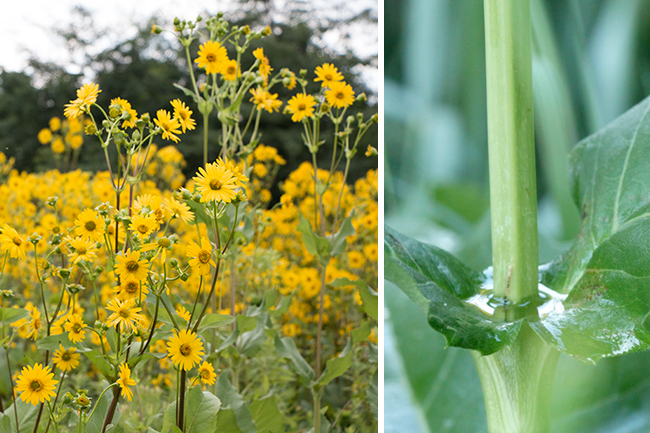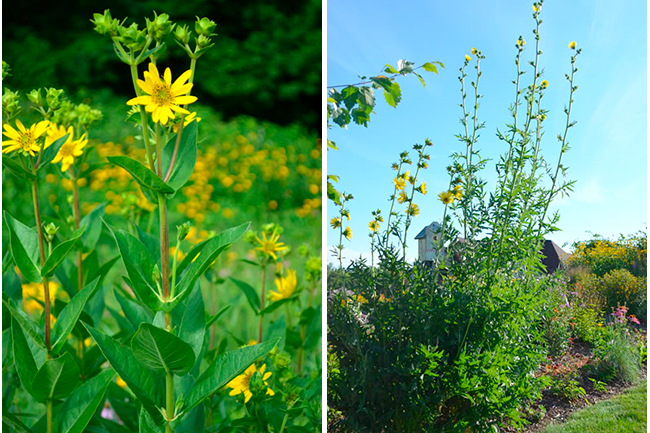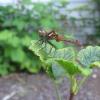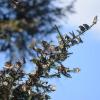Cup Plant, Compass Plant, Rosinweed
Silhpium spp.
Cup plant, compass plant, and rosin weed are common names for several related plants of the Silphium genus. These tall, sunflower-like prairie plants have deep taproots, tough, papery leaves, and very long lifespans. These enormous wildflowers are tough to fit into the home garden, but where space allows they are interesting and beneficial specimens that have almost disappeared with the loss of our prairies.
Cup plant can grow to a staggering 12’ tall. Topped with multiple clusters of yellow flowers, the common name refers to the leaves that clasp the stem forming cups that collect and hold water for many days after a rainfall, providing access to water for birds and bees. The plant will form colonies where conditions suit it, and when the extremely tall stalks topple over at the end of the season they spread seed wherever they land. Young plants are easy to identify and dig up wherever unwanted, but still – this is a plant that needs lots of room to grow.

Cup plant attracts many visitors, including honey bees, bumble bees, and big showy butterflies. Soldier beetles and adult fireflies are unexpected but common visitors. One specialist is Dieunomia heteropoda, the largest sweat bee in the eastern United States, a striking species with black wings, a black body, long, curled antennae, and legs graced with unusual hooks and projections. Cup plant is a host plant for caterpillars of the silphium moth (Tabenna silphiella) and leafcutter bees may use the hollow stems as nest sites.
Rosinweed, (S. integrifolium), is a more garden-friendly species, growing to a manageable 4’-5’ in height. While it doesn’t hold water like cup plant, it is less aggressive, is similarly attractive to pollinators, and is especially relished by some of our smaller solitary bees.
Like cup plant, compass plant (S. laciniatum) towers above the landscape at 8’-9’ tall, but has lacy, deeply serrated leaves. It’s a magnet for swallowtail and other showy butterflies. The common name refers to the unique habit of the leaves orienting themselves along a north/south axis, and was once used to help disoriented settlers find their way. Individual plants can live to be 100 years old!
Native Range: Siplhiums are natives of the prairie states, though species can be found in nearly every state east of the Rockies.
Best for: Providing vital water sources for birds and pollinators, supports a diversity of pollinators including specialist bees, moths, and butterflies.




